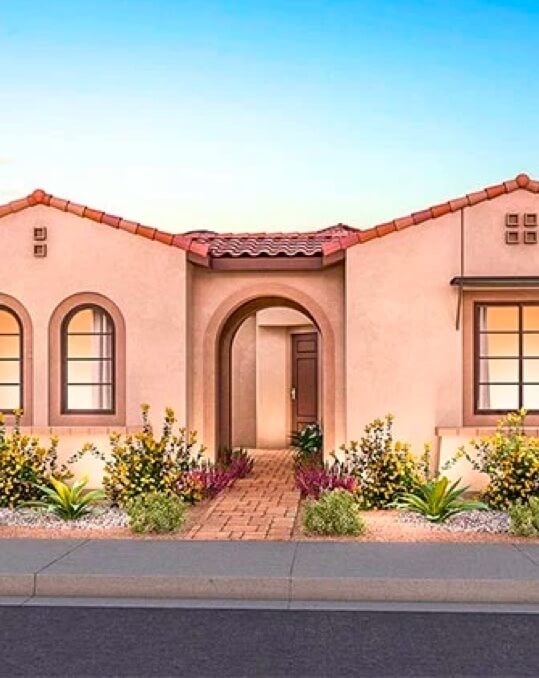Are you thinking of taking a mortgage to finance your homeownership? You are not alone. Most Americans buy their homes through mortgage financing. Despite the popularity of mortgages in the home market, many buyers still find the process complex. Few can differentiate the mortgage interest rate vs APR or explain the financial jargon used in homeownership financing. Here, we will look at the difference between mortgage interest rate and APR, as well as answer other frequently asked questions to help you make informed decisions when taking out a mortgage.
Mortgage Interest Rate Vs APR Mortgage

The terms interest rate and annual percentage rate (APR) are common in mortgages. While the two terms refer to loan costs, there is a difference between advertised interest rates and APR. Here is what you need to know about interest rates and the annual percentage rate.
- Mortgage Interest rate. The interest rate is the cost of a loan, usually expressed as a percentage of the principal (borrowed amount). Interest rates can be fixed or adjustable.
- APR (Annual percentage rate). APR is the total annual cost of a loan, including interest rates, fees, mortgage insurance, closing costs, and other charges related to the mortgage. Like the interest rate, the APR is also expressed as a percentage.
Borrowers seeking to compare loan estimates from different lenders can use APR since it provides more information about the loan cost than interest rates. However, we recommend caution when comparing APR for adjustable interest rate loans. The APR in these loans does not mirror the maximum interest rate. It is also good to use the two percentages when comparing loan costs.
Fixed Rate or Adjustable Rate

The mortgage market has two types of interest rates: fixed and adjustable or variable. In a fixed-interest rate mortgage, the loan interest rate is set at the beginning of the loan contract and remains the same until the last installment.
An adjustable interest rate mortgage (ARM), on the other hand, means the interest charged on your loan can fluctuate in response to an interest rate index. The interest component of your monthly installment goes up when the index increases and goes down when the index drops.
In most cases, the initial interest rate in an ARM is lower than a fixed interest rate mortgage. The rate remains low for the first few months but begins to rise in response to the interest rate index. But since it’s a variable rate, you can expect to pay less when the interest rate index declines.
What are closing costs?

Closing costs refer to the numerous fees charged to finalize the mortgage. The fees can include origination and application fees, legal fees, and checking charges, among others. You pay closing charges on any new loan, including a refinancing. Mostly, the closing charges range between 2% to 5% of the loan amount. The good thing is that you can negotiate some of these fees to reduce the closing costs. You can also compare loan estimates and closing costs to get the best offer.
How much do I need for a down payment?

Unlike what most people think, mortgage down payments are not capped at 20%. That means you do not always need to raise a 20% down payment to secure homeownership financing. Some loans, such as USDA and VA loans, require no down payment at all.
In essence, a mortgage down payment depends on various factors, including loan type and your budget. While conventional loans require a minimum of 3% and FHA loans require a minimum of 3.5% down payment, respectively, you may choose to pay a higher deposit when you understand the mortgage market. Making a higher down payment reduces the loan component of your homeownership financing.
For instance, a 20% down payment means you only borrow 80%, while a 0% down payment means your homeownership financing is 100% on loan. A high down payment reduces the mortgage cost since interest is charged on the borrowed amount. Moreover, a 20% or more down payment saves you from paying mortgage insurance, which increases the total loan cost.
What credit score do I need to get a mortgage?

Credit scores range from a minimum of 300 to a maximum of 850. Most lenders consider a credit score of 740 and above as very good. However, different loan types require different credit scores. You can still get a mortgage with a credit score as low as 500. Nevertheless, lenders will charge you high interest rates as they consider you a high-risk borrower.
Is an inspection the same thing as an appraisal?

No, while an inspection and appraisal refer to checking the condition of a home before mortgage financing, they differ in context. Inspections are ordered by the buyer while appraisals benefit the lender. The buyer contracts a third-party inspector to evaluate the property and check whether it’s habitable. Third-party inspectors advise the buyer to buy the property or negotiate for repairs from the seller or repair credits.
An appraisal, on the other hand, benefits the lender. The appraiser advises the lender on the viability of the loan process. Their report shows whether the property is worth the amount being borrowed or not. The lending process proceeds to the next level if the appraised value is equal to or greater than the offer for the home.
What mortgage offer is the best?

Choosing the best offer involves several considerations. You start by comparing the rate vs the APR mortgage to know the cost of different offers. Once you get the offer with the lowest loan cost, consider the monthly installments and whether you can afford to meet your loan obligations. You can reduce the monthly installment by making a higher down payment.
Learn More About Mortgage Financing
While mortgage financing can be complex, it’s always good to understand the loan offer before signing. At 55places, we can help you understand different aspects of mortgage financing and make informed decisions when buying your dream home. We can also help you locate the homes on sale and the best retirement destinations. Contact us today to learn more!










